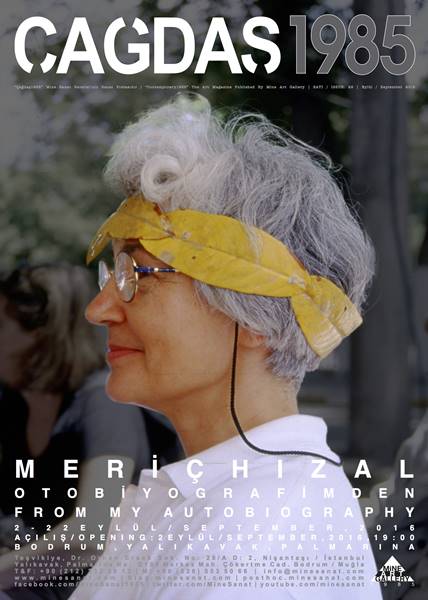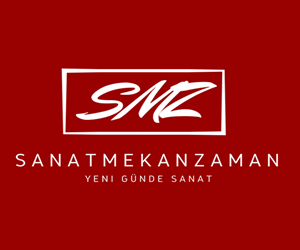Meriç HIZAL Heykel Sergisi 2 – 22 Eylül 2016 tarihleri arasında Mine Sanat Galerisi Palmarina Bodrum, Yalıkavak’ta!
ŞAPKAMIZI ÖNÜMÜZE KOYALIM!
Onu şöyle tanıtıyordu Prof. Dr. Semra Germaner İş Bankası Sergi katalogunda. “Sanatını yaşamla kurmaya çalıştığı doğru bağlar üzerine temellendirmeyi amaçlayan, araştırıcı ve sorgulayıcı bir sanatçı Meriç Hızal.”
Kendisi Mine Sanat Galerisi’nde sergilenen heykellerini şöyle açıklıyor: “On yılda bir yaşadığımızı yeniden yaşadık. Neden, ne yapıyoruz, ne yapmalıyız bu istenmeyen tekrarlardan kurtulmak için? Otobiyografik çalışmama yeniden döndüm. Benim için sanat kendime yolculuk, kendimi bulma belki yaratma. Bazen günah çıkarma hatta pişmanlık. Bu çalışmada kendi özelimden hareketle birey-toplumsal yaşam arası bir karşılaştırma yapmak bir bakıma yaşadığım süreci tekrar irdelemek istedim. Kolektif bilinçaltına seslenen, belleği zorlayan, ‘Ne yapmalı’ dedirten bir çalışma olsun istedim. İnsanlığın belleği unutma özürlüdür denir ve de bireysel hafızanın en çok 30 yıl geriye gittiği. Oysa çoğu çok daha eski olay öylesine aklımda ki herhalde unutmak istemiyorum ve de unutturmamak. Onun için belgelemeli, taşa kazımalı, metalden oymalı. Tıpkı Ülkemdeki kadim uygarlıklardan bize kalanlar gibi. İçimi daha iyi dökmek için epigrafiye de gereksinimim vardı. Yalnız taşıdığı açık anlamı ya da dokusal katkısı için değil bizatihi insanın izi olmaktan kaynaklanan o gizli estetik haz için.”
Dalia Maya, Şalom gazetesindeki yazısında bu yapıtları şöyle tarif etmişti: “İçine girip, üstüne oturup sanat eserini yaşam anına dönüştürmek. Soma’da yok olan madenciler… Ve onların çocukları… Çocuk istismarı… Sanatçının olduğu kadar bizlerin de yüreğine lök diye oturan onca acımasız sıfat… İstanbul… Gündelik hayat. Yaşam sorgulamaları, insana dair ne varsa, ama belki de en çok yüreğini acıtan ne varsa heykele dönüşüyor Prof. Meriç Hızal’ın hünerli ellerinde. Belki bir mesaj vermek üzere topluma, ama en çok da sağaltmak üzere ruhunu; çünkü insan ancak kendi ruhunu sağaltınca şifa olabilir yüreğinin değdiğine.”
Bu ifade tam da sanatçının tarif etmeye çalıştığı ve Ülkü Uluırmak Alçora’nın Hürriyet Gösteri ekinde dile getirdiği gibi. “..Unutmamak zorundayız. Bu hepimize düşen en önemli görev, en önemli SORUMLULUK… Önce sarsılmak, sonra sarsmak… Toplum içinde bireysel sorumlulukların farkında olmak. FARK ETMEK…
İşte bunun bilincinde olan bir sanatçıyla karşı karşıyayız. Kendi özelinden hareketle, geldiği geçtiği süreçleri çok iyi değerlendirip irdeleyen bir sanatçının duyarlılığı karşısındayız. Biçimlendirilen nesnenin (şapka)konuyla ilişkisi özel bir anlam ve önem kazanıyor. 25 Ağustos 1925’te Ata’nın ilk kez giydiği şapkadan, güncel ve yaygın takkeye kadar çağrıştırdıklarıyla insanı ister istemez düşündürüyor.”
Sergideki yapıtların her biri iki elemandan oluşuyor. Taş parçalar gerçek gazete boyutunda. Doğan Hızlan’ın Hürriyet gazetesindeki köşesinde belirttiği gibi –….sanatçının taraf olduğunu, sanatın toplumsal işlevinin önemini vurguluyor- fikrini doğrularcasına taraflılığını peşin-peşin kabul ettiği tabletlerde Türkiye’nin güncesi gibi o tarihli bir yıllık basından araştırıp derlediği sosyolojik, kültürel, politik kendisince önemli, şaşırtıcı haberlerden kısaltılmış özetler var. Yarattığı derin izi anlatması için taşa delerek oyulmuş. Ahşap parçalar kendisinin değişik tarihlerde giydiği, geometrik bir düzenle biçimlendirilmiş giyilemez temsili şapkalar. Bir duruş, kendini, bakış açısını tarif eden, o yılki yaşamını tanımlayan simgeler, bir tür anı-nesne gibi. Yaşadığı Edirne, İstanbul gibi kentlerden biçim ve renk öğeleri taşıyan, mimariye, iklime, aileye, sosyolojik olgulara göndermeler yapan, izleyiciyi empati yapmaya davet eden formlar.
Bu yapıtları Zeliha Burtek Yapı Dergisinde şöyle tanımlar: “Giymekten keyif aldığı ve O’nu, yaşamını simgeleyen başlıkların ahşap heykelleri ve aynı yıllarda Türkiye’de yaşamı özetleyen “Taraflı” Taş Gazete tabletleri… 12 adet Otobiyografik Derleme. Yaşadıklarını içeren spot bilgiler, bütün bunlar taş ve ahşap malzemeyle görselleşiyor. Taş üzerine yazılarda, gezmeye olan ilgisinin, Anadolu geleneğinin, sevdalısı olduğu arkeolojinin de etkisi var. Ancak nesneleri bir geometrik sistem içinde görüyor ve görselliyor. Örneğin Akademi’ye girişte taktığı bere, artık boşluk-kubbe-mimari ilişkisini birleştirir……… Hızal, çalışmalarında, heykelin bir sanat alanı olmadan önce yaşamın temelini oluşturduğunu düşündürür. Burada madde-form-kavram üçlüsü birbirine yaslanmadan bir arkadaşlık içinde ilerlerken, Hızal görmezden gelinen, yok sayılan konuları, yaşam alanlarını heykelin içine dahil eder. İlginç nokta, konuların maddeye önceliği, geometrinin kurucu rolüyle aşılarak, geometri arayışa yönelen, herkes için ortak olanın ifadesine dönüşür.” IŞIK Üniversitesi’ndeki öğrencileri ile de aynı ilkeleri paylaşır Hızal. Apollo Tapınağı’nın alınlığında yazılı olduğu gibi, sanatçı öncelikle ‘Kendini Tanımalı’ içten olmalıdır.
Burcu Pelvanoğlu’na göre de “Meriç Hızal heykelleri öncelikle biçimdir, formdur. Fakat bunlar aynı zamanda bir şeyi düşündürmesi, bir şeye analoji yapması, bir metafor oluşturması için gerçekleşen heykellerdir.”
Metaforlarla dokunduğu zaman teması, değişen, dönüşen ya da tekrar eden ama hep var olan bir light motif gibi onun çalışmalarında. ‘Otobiyografimden’ çalışmasında seçilen tarihler kişisel yaşamının dönüm noktaları. 1945, 1949 Edirne’deki mimariden, taşlardan, doğadan etkilenen bir çocuğu, 1950-51 heyecanlı bir yaşam döngüsünü, 1962-63 umut ve sorumluluğu 1973 en büyük tutkusunu, yıkımı-yapımı, 1983 Oğluna derin hasretini, 1993 özgürlüğünü simgeliyor. Ama O Ülkesindeki aynı tarihli olaylarla karşılaştırmalar yaparak bir iç hesaplaşmaya giriyor. 2006-2007 Yıllarına geldiğinde bu hesaplaşma kendisini temsil eden şapkalara yansıyor. Ve sonunda kendi ağzından bir fiil çekimi gibi suskunluğunu itiraf ederek ve bunu izleyiciye okutarak, ona tekrar ettirerek toplumsal suskunluğumuzu, sonra da suçluluğumuzu sorguluyor.
Sanem Eyigün Hürriyet Gösteri’de “Engelleyemediği (miz), anımsadığı, sanatçıyı ‘acıtan’ olayları içeren ‘Gazete tabletleri’nin eklenmesiyle bütünlenen sergi, yaşadıklarımız üzerine izleyicisini ‘şapkasını önüne koyup düşünmeye’ bir iç hesaplaşma yapmaya çağırıyor.” diyor.
……………………….
Meriç HIZAL’s Sculpture Exhibition in Mine Art Gallery’s Palmarina Bodrum venue in Yalikavak between the dates 2 – 22 September, 2016!
LET’S PUT OUR THINKING CAP IN FRONT OF US!
In the exhibition catalog of Is Bank, Prof. Dr. Semra Germaner introduces Meric Hizal as “An artist searching, questioning and aiming to base her art on bonds that she tries to establish with life.”
She explains her sculptures in the exhibition at Mine Art Gallery: “We relive what we lived in every decade. Why, what do we do, what should we do to get rid of these unwanted repetitions? I turned to my autobiographical work again. For me, art is a journey to myself, a way to find myself, creation. Sometimes confession, even regret. In this work, with reference to my own life, I wanted to make a comparison between individual-social life, in a way, i wanted to examine my life period again. Addressing to collective unconscious, forcing memory, I wanted a work, have it said ‘What to do’. It is said that human memory is forgetting disabled, and individual memory goes back to 30 years the most. Yet, I remember much older events in my mind, probably I do not want to forget them and not cause anyone to forget. They must be documented because of that, they must be inscribed on stone, carved from metal. Just like the remainings of my country’s ancient civilization to us. I needed epigraphy to pour my hearth out. Not just for the very meaning or textural contribution, but for the secret aesthetic pleasure derived from the trace of man.”
Dalian Maya, in her article in Shalom newspaper, described these works as follows: “By going inside, sitting on top of the artwork and turning it to a life memory. And Soma miners who passed away… and their children… child abuse… Many vicious adjectives give pain to our hearts in so far as the artist’s heart… Istanbul… Daily life. Questioning of life, whatever about man, but perhaps whatever the most hurts people’s heart is turning into a statue in the talented hands of Prof. Meric Hızal. Perhaps to give a message to society, but mostly to treat her soul; because one can only heal other’s heart when s/he heal his/her soul first.” This phrase is exactly as what the artist try to explain and as Ülkü Uluırmak Alçora expressed in Hürriyet Gosteri News. “We have to avoid to forgot. It is the most important task on all of us, it is the most important RESPONSIBILITY… First to be shocked, then to give a shock… to be aware of individual responsibility in society. TO NOTICE…
Here, we subject to an artist who is aware of this. Starting from her own private life, we are faced with the artist’s sensitivity evaluating the phases she passed through very well. Formed object (hat) gains a special meaning in relation to the subject. From the hat that Atatürk wore for the first time on 25th August 1925, to the common skullcaps inevitably let people think.”
Each of the works in the exhibition consists of two elements. Stone pieces are in real newspaper size. As Doğan Hızlan stated in Hurriyet Newspaper emphasizing that – an artist has a side, and art has a social function.- The tablets justify the idea of Hızlan as Turkey’s diary. They are consisting of the abbreviated summaries of the surprising news on sociological, cultural, political issues in Turkey that she collected by investigating the media for a year. To describe the indelible impression, they are carved on stone by drilling. Wooden works in geometric representation are the unwearable replicas of her hats that she wore in different times. They are like a stance, or the symbols that identifies the perspective of its year, a sort of memory object. The forms inviting the viewer to show empathy and bearing the style, color, architecture, climate and family elements from the cities that she lived in like Edirne and Istanbul.
Zeliha Burtek describes these works in Yapı Magazine as: “Wooden statues of the hats that she loves to wear symbolizes her life, and the stone newspaper tablets outlining the life in Turkey in those years… 12 autobiographical compilation. Spot information about what she lived, all of them are visualised with stone and wood materials. In the writings on stone, there are the effects of her interest of travel, the Anatolian tradition, also her love of archeology. But she sees the objects in a geometric system and visualised them in that way. For instance, beret that she wore in the first days of the academy, now combines the space-dome-architecture relationship… Hızal, in her works, lets us to think that sculpture is the basis of life before it was considered as a way of art. While the trio of material-form-concept goes together, Hızal includes living spaces and ignored topics to her sculptures. The interesting point is that the priority of the subject matter passes over via the constitutive role of geometry, and turns to a common expression in search of geometry.” She also shares the same principles with her students at Işık University. As it is written in the pediment of the Temple of Apollo, an artist should primarily self diagnose, should be honest.
According to Burcu Pelvanoğlu, “Meric Hızal’s sculptures are primarily form and shape. But these are the sculptures to let people think something, to draw an analogy with something, and to create a metaphor. “
The theme of time that she composes with metaphores is always in her works as sometimes changing, transforming or ongoing light motif. The selected works for the exhibition titled “From My Autobiography” are the landmarks of her personal life. The years 1945-1949 symbolize the child impressed by the nature, architecture and stones in Edirne, 1950-51 symbolize hectic life cycle, 1962-63 symbolize hopes and responsibilities, 1973 symbolizes her greatest passion, demolition-construction, 1983 symbolizes the deep longing to her son, and the year 1993 symbolizes her freedom. By making comparisons with the events occured in those years in her country, she also does self confrontation. When the years 2006-2007 come, these confrontations redound to hats representing herself. And at the end, she confesses her silence in her way like conjugation, and by letting audience read what is written and by let ting them repeat, she is questioning our silence and quilt. In Hürriyet Gösteri, Sanem Eyigün says that “the exhibition is compleated with the addition of the newspaper tablets which includes the events that she (we) can not prevent, that she remembers, and the events which gives her a pain. It is calling the audience to put their thinking cap in front of themselves and to do self confrontation.

